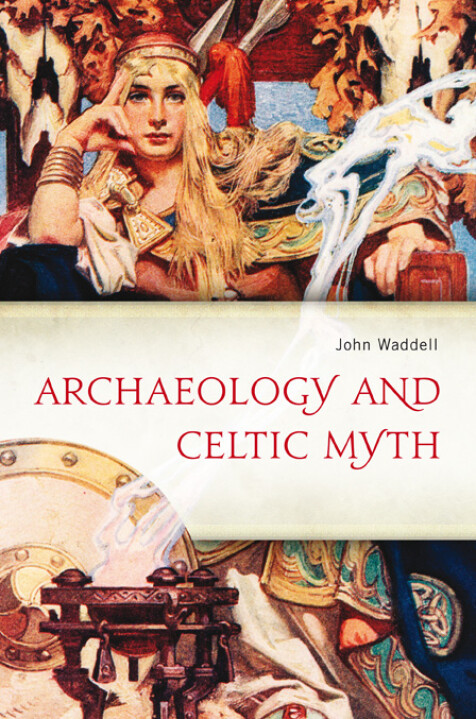Archaeology and Celtic myth
An exploration
John Waddell
‘An interesting and intriguing book … The material that Waddell describes is intrinsically interesting. He identifies links between archaeology and themes such as sacral kingship, the sovereignty goddess, solar cosmology and the perception of the Otherworld … There is much detail in the book to be considered and I would suggest that it will take several readings to fully evaluate Waddell’s assessment of this archaeological otherworld. This is a fascinating and well-articulated study, blending familiar and unfamiliar themes, with interested conclusions for both the historian and the archaeologist’, Archaeology Ireland (Summer 2014).
‘This book sets the archaeology of key sites in Ireland beside the early medieval myths and lore that refer specifically to each site in the hope that a deeper understanding may emerge … The book is an impressive assemblage, well referenced, dealing with some of the most significant archaeological sites in Ireland and incorporating data from recent excavations, surveys and commentaries. It is an authoritative study which quickly brings the reader to the heart of a complex and challenging subject’, Christopher Lynn, Ulster Journal of Archaeology (2017).
‘In this book John Waddell seeks to understand pagan beliefs in Ireland and western Europe by combining Celtic myth and the surviving archaeological record … The book is excellent in the breadth of the data it brings to bear to the subject. One is continually lead from obscure pieces of mythological narrative, to artwork and artifacts across the whole of Europe … this book should be required reading for all Iron Age prehistorians’, Finbar McCormick, Studia Hibernica (2014).
‘The interpretation of human behaviour, of which archaeological monuments and artefacts are the material expression, can certainly benefit from Waddell’s novel approach of melding archaeology and mythology together … Waddell is to be commended for sticking his archaeological academic toe into the “otherworld” of imaginative story and emerging with more roundly-developed insights into the meaning of ritual activities of people who lived in the distant past and left their lasting marks on the Irish landscape of today’, Mairéad Carew, Breac: a digital journal of Irish studies (March 2016).
‘Strong and compelling. Many new areas of potential inquiry have been opened up to Celticists through the presentation of evidence pertaining to the widespread use of mythic symbols in the archaeological record … This type of interdisciplinary approach is to be commended, and it is hoped that others will follow Waddell’s courageous example’, Sharon Paice MacLeod, CSANA newsletter (2014).
‘A work seeking to illuminate links between Celtic myth and archaeological traces in the Irish landscape … The quilt Waddell has woven is certainly interesting, and the images are of excellent quality … the book will prove extremely stimulating reading to anyone with an interest in any of the sites or landscapes discussed or their related mythology. Waddell’s treatment is thorough and provides very solid introductions to the four archaeological sites/landscapes examined. In particular, he provides a number of good, thought-provoking readings that cover a wide range of topics … With such a thorough introduction to the possibilities of myth embodied in landscape, this book will no doubt provide scholars with a great deal to think about and a platform from which to go further’, James G. Schryver, Eolas (2015).
‘In [this book], Waddell explores Celtic myth from an archaeological base, resulting in an engaging text that challenges the reader’s perception of both Irish prehistoric monuments and Irish myth’, Katherine Leonard, Journal of Irish Archaeology (2015).
'Beautifully produced and elegantly written ... Professional medievalists are likely to find Waddell's book most useful for the rich, learned, and clear summaries of the Bronze Age and Iron Age archaeological data', Mark Williams, Cambrian Medieval Celtic Studies (Winter 2014).
‘Today we are no longer in doubt that myths do provide us with perspectives on archaeological issues. Archaeologists from both Norway and Sweden have recently published magisterial studies. To this is now added a seminal overview by Waddell', Karen Schousboe,www.medievalhistories.com.

